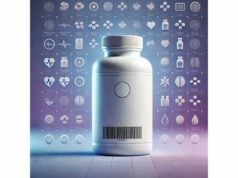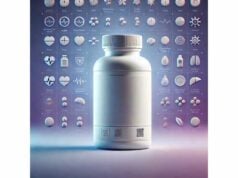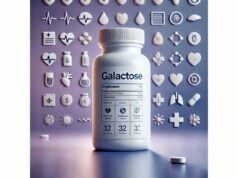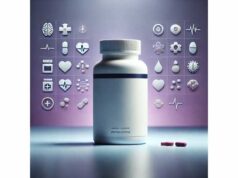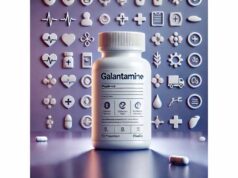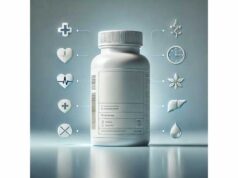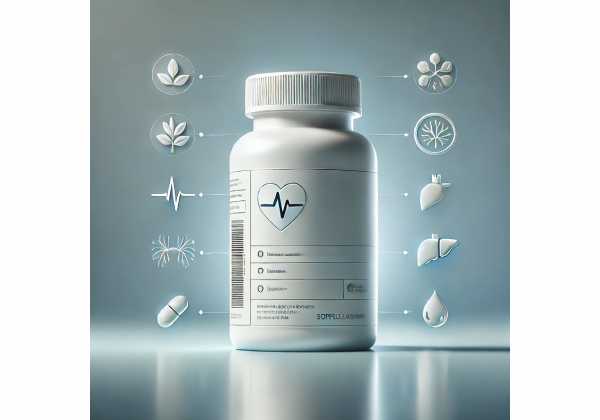
Gamma-butyrolactone (GBL) is an industrial solvent that the body rapidly converts into gamma-hydroxybutyrate (GHB), a powerful central nervous system depressant. Despite its reputation in some circles as a “supplement,” GBL is not approved for wellness uses and carries a narrow margin between desired effects and overdose. People encounter it in nightlife settings, as an adulterant, or through online markets mislabeling it as a health aid. In reality, GBL’s effects are unpredictable, dependence can develop quickly, and mixing it with alcohol, opioids, or benzodiazepines sharply increases the risk of coma and respiratory depression. Clinically, a related medicine (sodium oxybate) is prescribed for narcolepsy under strict supervision—this is not the same as consumer use of GBL. This guide explains what GBL is and why it’s risky, offers clear warning signs of toxicity, outlines who should avoid it completely, and summarizes what the evidence and regulators say.
Need-to-Know
- May cause sedation, amnesia, and loss of consciousness; dependence can develop within weeks.
- High overdose risk, especially with alcohol, opioids, benzodiazepines, or ketamine.
- No safe consumer dose is recommended; 0 mg for self-use.
- Avoid entirely if pregnant, breastfeeding, under 18, or with liver, kidney, or respiratory conditions.
Table of Contents
- What is GBL and how it acts?
- Does GBL have benefits?
- Why GBL misuse is dangerous
- Recognizing toxicity and what to do
- Who should avoid and dangerous interactions
- Evidence and legal status at a glance
What is GBL and how it acts?
Gamma-butyrolactone (GBL) is a colorless, oily liquid used in industry (e.g., paint strippers, cleaning agents). In the body, it is quickly converted by enzymes into gamma-hydroxybutyrate (GHB). GHB is an endogenous neurotransmitter and a potent sedative-hypnotic; when levels rise sharply from GBL ingestion, it depresses brain activity through GABA-B and GHB receptors. The result is dose-dependent sedation: from relaxation and disinhibition to deep sleep, coma, and dangerous breathing suppression.
A key reason GBL is hazardous is its steep dose-response curve. Small increases in volume can push someone from mild effects into profound unconsciousness. Street liquids vary widely in concentration, making “measuring” unreliable even for experienced users. The onset can be delayed or faster than expected depending on stomach contents, body weight, liver function, and concurrent medicines. Because GBL and GHB have relatively short half-lives, people sometimes “redose,” stacking effects and raising overdose risk.
Unlike regulated medicines, consumer GBL products lack quality controls. Bottles may contain different strengths from one purchase to the next—or even within the same bottle—due to phase separation or adulterants. Moreover, GBL itself is caustic; undiluted fluid can irritate the mouth and gastrointestinal tract.
Legal context: In many countries, GBL is tightly regulated: it may be a controlled substance, a scheduled precursor, or a restricted chemical with penalties for supply or possession for human consumption. Even where its industrial sale is legal, ingesting or marketing it as a drug is typically unlawful. Employers and athletic bodies often prohibit GHB/GBL, and some testing programs can detect recent exposure.
Bottom line: Biologically, GBL behaves as a prodrug of GHB, with rapid conversion and pronounced sedative effects. Practically and legally, it is not a supplement and carries serious risks that outweigh any perceived benefits.
Does GBL have benefits?
From a consumer health perspective, the answer is no. GBL has no approved dietary, wellness, or over-the-counter therapeutic use. Online claims that it aids sleep quality, anxiety relief, muscle recovery, or libido rely on anecdote and often conflate GBL with prescription-only sodium oxybate, a regulated form of GHB used for narcolepsy. Those clinical uses are not applicable to self-administration of GBL. The prescription medicine is dispensed in standardized concentrations, with strict patient education, restricted access, and night-time dosing schedules under specialist supervision; most importantly, its benefit-risk profile has been evaluated in controlled trials for a specific diagnosis, whereas GBL “supplementation” has not.
Even when people report short-term effects they consider “beneficial” (e.g., relaxation or increased sociability), those same effects are markers of central nervous system depression. Tolerance can develop rapidly, prompting higher and more frequent dosing that erodes sleep architecture, impairs memory, and undermines mental health. Dependence may appear within weeks with daily or near-daily use, and withdrawal can be dangerous, featuring agitation, tachycardia, hallucinations, and delirium that sometimes requires intensive care.
Some individuals hope that micro-quantities might be low-risk. Unfortunately, the variability of illicit liquids and the narrow safety margin make this assumption unreliable. What seems like a “small” dose in milliliters can represent a large change in true GBL content from one bottle to another. Additionally, self-experimentation often ignores interactions with common substances—especially alcohol—that sharply magnify harm.
About dosage: Because GBL is a controlled/regulated chemical with a high overdose risk and no approved consumer indication, there is no safe or recommended dose for self-use. Providing dosing instructions would be unsafe and irresponsible. If you are exploring treatment for sleep disorders, talk with a physician about evidence-based options; do not attempt to substitute GBL for medical care.
Why GBL misuse is dangerous
1) Narrow safety window. The difference between “some effect” and life-threatening toxicity can be small. Liquids vary in concentration, and common kitchen tools are not precise. A misjudged sip or “capful” can suppress breathing and cause sudden unconsciousness.
2) Rapid dependence and severe withdrawal. With frequent use, tolerance escalates within days to weeks. Abrupt cessation can trigger a withdrawal syndrome—anxiety, tremor, insomnia, delirium—that may progress to seizures or require high-dose benzodiazepines in hospital. People with polysubstance use or medical comorbidities are at heightened risk.
3) Interactions that multiply risk. Alcohol, opioids, benzodiazepines, sedating antihistamines, pregabalin, and ketamine all compound respiratory depression. Stimulants (e.g., cocaine, methamphetamine, MDMA) may mask sedation early on, encouraging redosing, then “crash” into profound CNS depression as stimulant effects wane.
4) Unpredictable kinetics. Food delays absorption; fasting can speed onset. Liver disease alters metabolism. Because effects can crescendo after initial dosing, “topping up” within the hour is especially hazardous.
5) Medical complications. Beyond coma and respiratory failure, reported complications include aspiration pneumonia, bradycardia, hypothermia, rhabdomyolysis (muscle breakdown), and traumatic injuries from sudden collapses. Memory gaps (“blackouts”) are common and increase vulnerability to assault or accidents.
6) Adulteration and mislabeling. Some liquids sold as “GHB” are actually GBL, 1,4-butanediol (1,4-BD), or mixtures. These precursors differ in absorption and potency, making past experiences a poor guide to present risk.
7) Legal and occupational consequences. Possession or use may be illegal; harms can include arrest, loss of employment, or athletic bans. Drug checking cannot guarantee safety, legality, or accurate dosing.
Takeaway: GBL misuse is dangerous because its pharmacology, formulation variability, and interaction profile create a high likelihood of overdose and long-term harm.
Recognizing toxicity and what to do
Early signs can include dizziness, slurred speech, vomiting, sweating, and unusual drowsiness. Red flags for medical emergency: slowed or irregular breathing, snoring or gurgling sounds, skin that feels cold or looks bluish, unresponsiveness, seizures, and repeated vomiting with reduced consciousness.
If someone may have taken GBL/GHB:
- Call emergency services immediately. Provide age, symptoms, substances taken (if known), and timing.
- Do not leave the person alone. Keep them on their side (recovery position) to lower aspiration risk.
- Do not give food, drink, or additional substances. Coffee or stimulants do not “reverse” GBL and can complicate care.
- Monitor breathing. If breathing stops or is dangerously slow, be prepared to start CPR if trained while waiting for paramedics.
- Tell clinicians about alcohol, opioids, benzodiazepines, or other drugs—this information saves lives. There is no antidote for GHB/GBL; care is supportive (airway and breathing management, observation, and treatment of complications).
- For withdrawal concerns, seek urgent medical care rather than stopping abruptly at home. Severe withdrawal can escalate quickly and requires specialist management.
After an incident: Even if the person “wakes up,” delayed complications (aspiration, recurring sedation) can develop. A medical assessment helps detect these problems and offers pathways to substance use support.
Important: Attempting to “balance” GBL with stimulants, sedatives, or home remedies is unsafe. Likewise, unconventional measuring tactics (e.g., caps, droppers, “lines” on bottles) are unreliable and raise overdose risk.
Who should avoid and dangerous interactions
Avoid entirely if any of the following apply:
- Age: under 18 years.
- Pregnant or breastfeeding: risk to the fetus or infant; transfer into breast milk is possible for GHB analogs.
- Respiratory conditions: asthma, chronic obstructive pulmonary disease, sleep apnea.
- Neurologic or psychiatric conditions: seizure disorders, severe depression, psychosis, or a history of substance use disorder.
- Cardiovascular disease: bradyarrhythmias, heart failure.
- Liver or kidney impairment: altered metabolism increases toxicity risk.
- Occupational safety concerns: operating vehicles or machinery; roles requiring alertness or safety-critical decisions.
High-risk interactions (non-exhaustive):
- Alcohol (any amount).
- Opioids (e.g., oxycodone, morphine, tramadol, methadone, buprenorphine).
- Benzodiazepines (e.g., diazepam, alprazolam, clonazepam).
- Other sedatives/hypnotics (z-drugs, sedating antihistamines like diphenhydramine, barbiturates).
- GABA-ergic agents (baclofen, pregabalin, gabapentin).
- Anesthetics and ketamine.
- Stimulants (methamphetamine, cocaine, MDMA): can mask sedation then worsen the crash; cardiac risks increase.
- CYP and alcohol-dehydrogenase affecting drugs: may unpredictably change kinetics.
Drug testing and detection: Standard workplace tests may not always include GHB/GBL. Specialized testing can detect recent exposure (typically within hours). Attempting to evade testing is both unethical and illegal in many settings.
Crucial guidance: Because risks are substantial and interactions common, the only safe course for consumers is complete avoidance of GBL. If you are seeking help for sleep, anxiety, or social functioning, discuss safer, evidence-based options with a qualified clinician.
Evidence and legal status at a glance
What the evidence shows
- Emergency harms: Hospital surveillance networks in Europe consistently record GHB/GBL among the substances leading to acute drug-toxicity presentations, with a notable proportion of cases needing intensive care.
- Overdose mechanisms: GHB formed from GBL activates inhibitory pathways in the brain, leading to central nervous system and respiratory depression; effects are potentiated by alcohol and other sedatives.
- Dependence and withdrawal: Regular use can cause physiological dependence with severe, sometimes life-threatening withdrawal requiring inpatient treatment.
- Therapeutic context (not GBL): Sodium oxybate (a pharmaceutical form of GHB) is effective for specific narcolepsy symptoms under strict risk-management programs. This does not translate into safe or appropriate self-use of GBL.
Legal landscape (high-level, non-exhaustive)
- Many jurisdictions treat GBL as a controlled precursor or prohibited substance when intended for human consumption.
- Supplying, possessing, or marketing GBL for ingestion can carry criminal penalties.
- Industrial/technical use may be permitted under licensing and record-keeping, but diversion to human consumption is illegal.
- Sports and workplaces often list GHB/GBL among banned substances, with serious disciplinary outcomes for positives.
Practical implications
- There is no consumer “supplement” role for GBL. Health claims circulating online are not supported by reputable clinical guidance.
- People seeking help for sleep, anxiety, or social anxiety should rely on regulated therapies with known dosing and monitoring, rather than experimenting with a volatile, illegal, and dangerous chemical.
- If you or someone you know is using GBL, consider speaking confidentially with a healthcare professional or local support service. Early, non-judgmental help reduces harm.
References
- Sodium Oxybate: MedlinePlus Drug Information 2025 (Guideline/Drug Monograph)
- Other drugs – the current situation in Europe (European Drug Report 2025) 2025 (Official Report)
- Assessment of the harms of gamma-hydroxybutyric acid, gamma-butyrolactone, and closely related compounds 2020 (Advisory Council Report)
- Current Insights on the Impact of Gamma-Hydroxybutyrate (GHB) Abuse 2022 (Systematic/Scoping Review)
- GHB – Gamma-Hydroxybutyric Acid 2025 (Official Fact Sheet)
Disclaimer
This article provides general information about gamma-butyrolactone (GBL) for educational purposes. It is not medical advice and does not replace consultation with a qualified healthcare professional. Do not ingest GBL. Do not start, stop, or change any medication or health practice based on this content. If you suspect poisoning, overdose, or severe withdrawal, call emergency services immediately.
If you found this guide helpful, please consider sharing it on Facebook, X (formerly Twitter), or your preferred platform, and follow us for future evidence-based articles. Your support helps us continue creating reliable, reader-focused health content.

